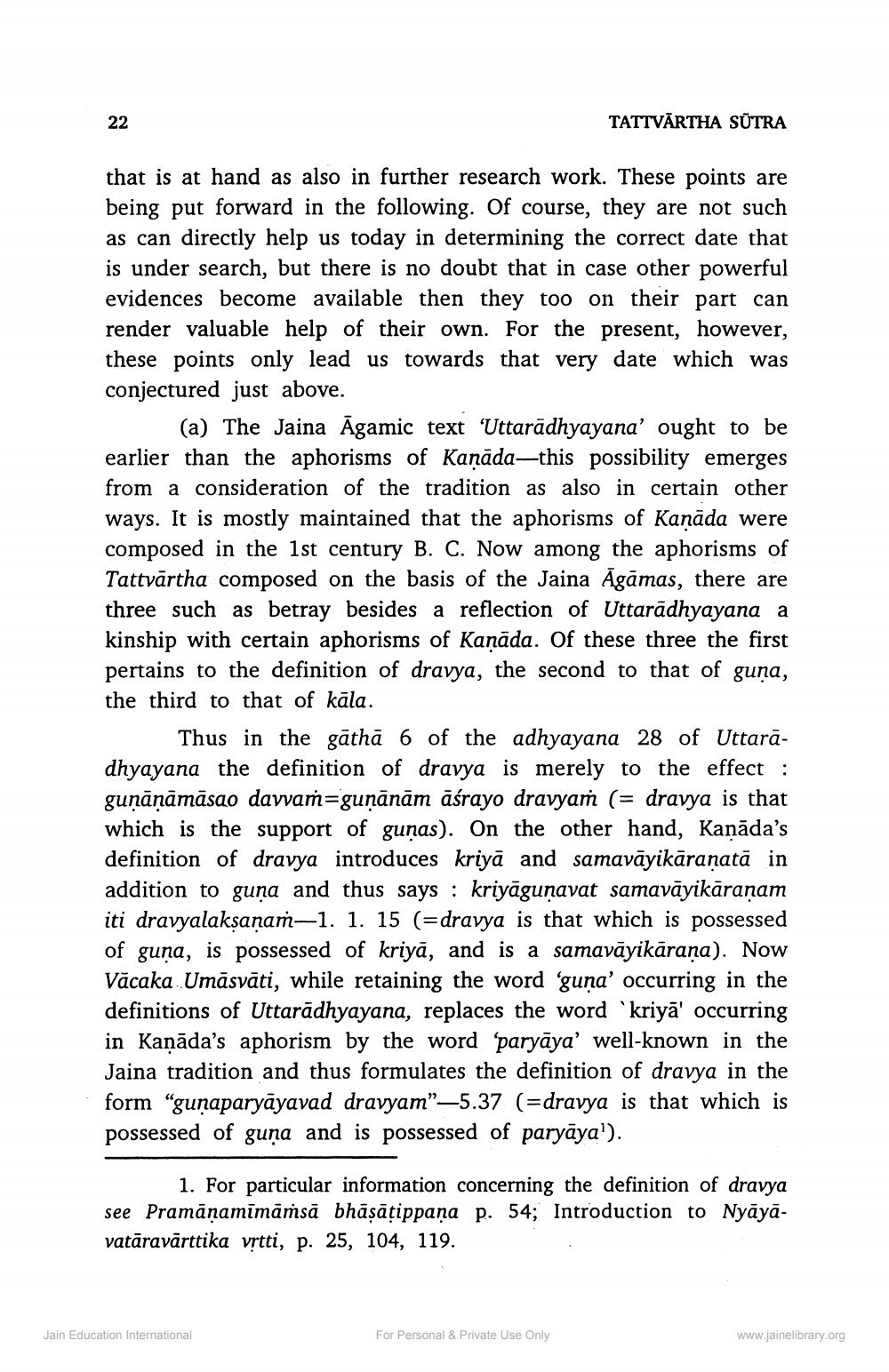________________
22
that is at hand as also in further research work. These points are being put forward in the following. Of course, they are not such as can directly help us today in determining the correct date that is under search, but there is no doubt that in case other powerful evidences become available then they too on their part can render valuable help of their own. For the present, however, these points only lead us towards that very date which was conjectured just above.
TATTVĀRTHA SŪTRA
(a) The Jaina Āgamic text 'Uttaradhyayana' ought to be earlier than the aphorisms of Kanāda-this possibility emerges from a consideration of the tradition as also in certain other ways. It is mostly maintained that the aphorisms of Kanāda were composed in the 1st century B. C. Now among the aphorisms of Tattvartha composed on the basis of the Jaina Āgāmas, there are three such as betray besides a reflection of Uttaradhyayana a kinship with certain aphorisms of Kaṇāda. Of these three the first pertains to the definition of dravya, the second to that of guna, the third to that of kala.
Thus in the gāthā 6 of the adhyayana 28 of Uttarădhyayana the definition of dravya is merely to the effect : guṇāṇāmāsao davvaṁ=guṇānām āśrayo dravyaṁ (= dravya is that which is the support of gunas). On the other hand, Kanāda's definition of dravya introduces kriya and samavāyikāraṇatā in addition to guna and thus says: kriyāguṇavat samavāyikāraṇam iti dravyalakṣaṇam-1. 1. 15 (=dravya is that which is possessed of guna, is possessed of kriyā, and is a samavāyikāraṇa). Now Vācaka Umāsvāti, while retaining the word 'guna' occurring in the definitions of Uttaradhyayana, replaces the word 'kriya' occurring in Kanāda's aphorism by the word 'paryaya' well-known in the Jaina tradition and thus formulates the definition of dravya in the form "guṇaparyayavad dravyam"-5.37 (=dravya is that which is possessed of guna and is possessed of paryaya1).
1. For particular information concerning the definition of dravya see Pramāṇamīmāmsā bhāṣāṭippana p. 54; Introduction to Nyāyāvatāravārttika vṛtti, p. 25, 104, 119.
Jain Education International
For Personal & Private Use Only
www.jainelibrary.org




